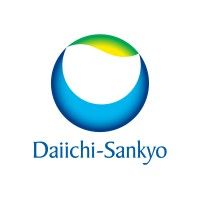预约演示
更新于:2025-05-07
Advanced Triple-Negative Breast Carcinoma
晚期三阴性乳腺癌
更新于:2025-05-07
基本信息
别名 Advanced Triple-Negative Breast Carcinoma |
简介 Triple-negative breast carcinoma that has spread extensively to other anatomic sites or is no longer responding to treatment. |
关联
84
项与 晚期三阴性乳腺癌 相关的药物作用机制 TOP1抑制剂 [+1] |
非在研适应症- |
最高研发阶段批准上市 |
首次获批国家/地区 日本 |
首次获批日期2024-12-27 |
靶点 |
作用机制 PD-1抑制剂 |
在研机构 |
在研适应症 |
最高研发阶段批准上市 |
首次获批国家/地区 中国 |
首次获批日期2024-06-25 |
作用机制 PD-1抑制剂 [+1] |
在研机构 |
原研机构 |
在研适应症 |
非在研适应症- |
最高研发阶段批准上市 |
首次获批国家/地区 中国 |
首次获批日期2024-05-21 |
150
项与 晚期三阴性乳腺癌 相关的临床试验NCT06590558
Phase I/Ib Study of Eribulin in Combination With ASTX660 (Tolinapant) in Metastatic Triple Negative Breast Cancer (TNBC)
This phase I/Ib trial tests the safety, side effects, best dose, and effectiveness of ASTX660 (tolinapant) in combination with eribulin mesylate (eribulin) in treating patients with triple negative breast cancer that cannot be removed by surgery (unresectable) or that has spread to nearby tissues or lymph nodes (locally advanced) or to other places in the body (metastatic). Tolinapant may stop the growth of tumor cells by blocking proteins, such as XIAP and cIAP1, needed for tumor cell survival. Chemotherapy drugs, such as eribulin, work in different ways to stop the growth of tumor cells, either by killing the cells, by stopping them from dividing, or by stopping them from spreading. Giving tolinapant in combination with eribulin may be safe, tolerable, and/or effective in treating patients with unresectable, locally advanced, or metastatic triple negative breast cancer.
开始日期2025-08-04 |
申办/合作机构 |
ChiCTR2500099292
A Multicenter, Phase III, Randomized Controlled Trial Comparing Camrelizumab Plus Apatinib and Eribulin Versus Physician's Choice Chemotherapy in the Treatment of Advanced Triple-Negative Breast Cancer
开始日期2025-04-01 |
申办/合作机构 |
NCT06889688
A Multicenter, Phase III, Randomized Controlled Trial Comparing Camrelizumab Plus Apatinib and Eribulin Versus Physician's Choice Chemotherapy in the Treatment of Advanced Triple-Negative Breast Cancer
This study evaluates the efficacy and safety of camrelizumab, apatinib, and eribulin versus physician's choice chemotherapy in advanced TNBC.Primary Objectives: Assess improvements in progression-free survival (PFS) and overall survival (OS).Secondary Objectives: Compare objective response rate (ORR), disease control rate (DCR), clinical benefit rate (CBR), duration of response (DoR), time to response (TTR), two-year OS rate, biomarker analysis, and quality of life (QoL).Safety: Assess and compare adverse event incidence and severity.
开始日期2025-04-01 |
申办/合作机构 |
100 项与 晚期三阴性乳腺癌 相关的临床结果
登录后查看更多信息
100 项与 晚期三阴性乳腺癌 相关的转化医学
登录后查看更多信息
0 项与 晚期三阴性乳腺癌 相关的专利(医药)
登录后查看更多信息
254
项与 晚期三阴性乳腺癌 相关的文献(医药)2025-07-01·Critical Reviews in Oncology/Hematology
PD-1/PD-L1 inhibitors combined with anti-angiogenic drugs for advanced triple-negative breast cancer: Synergistic mechanisms and research progress
Review
作者: Song, Qingle ; Guo, Shaowei ; Xu, Rui ; Li, Qingxia ; Wang, Xiaotong
2025-06-01·Journal of Controlled Release
Sonopermeation combined with stroma normalization enables complete cure using nano-immunotherapy in murine breast tumors
Article
作者: Mpekris, Fotios ; Stylianopoulos, Triantafyllos ; Neophytou, Constantina ; Voutouri, Chrysovalantis ; Charalambous, Antonia ; Panagi, Myrofora ; Angeli, Stella
2025-05-01·Breast Cancer Research and Treatment
A randomized phase II trial of nab-paclitaxel with or without mifepristone for advanced triple-negative breast cancer
Article
作者: Fleming, Gini F ; Conzen, Suzanne ; Rampurwala, Murtuza ; Freeman, Jincong Q ; Matossian, Margarite ; Howard, Frederick M ; Chen, Nan ; Stringer-Reasor, Erica M ; Kamaraju, Salaija ; Nanda, Rita ; Karrison, Theodore ; Hahn, Olwen ; Saha, Poornima
180
项与 晚期三阴性乳腺癌 相关的新闻(医药)2025-04-28
·药研网
2025年美国临床肿瘤学会(ASCO)年会将于5月30日至6月3日在美国芝加哥举行。近期,ASCO官网已经公布所有中选的摘要标题。ADC和双抗的持续火热则延续了近年趋势。据药研网不完全统计,国内ADC领域已有28款产品的36项研究在ASCO上披露,涵盖HER2、EGFR、TROP2等热门靶点。本文提前扫描一下亮相ASCO的国产新药:部分呈现,后台回复“2025ASCO”可获取资料合集 pdf.科伦博泰六项临床研究结果四川科伦博泰将在本次大会公布其TROP2 ADC芦康沙妥珠单抗(sac-TMT)、抗PD-L1单抗塔戈利单抗(A167)以及RET抑制剂KL590586(A400/EP0031)的六项临床研究结果,相关研究摘要全文发布时间:美国当地时间 2025 年 5 月 22 日1.TROP2 ADC SKB264标题:芦康沙妥珠单抗(sac-TMT)用于经治的晚期EGFR突变非小细胞肺癌(NSCLC)患者的随机临床研究(OptiTROP-Lung03)结果摘要#:8507会议日期:美国当地时间2025年6月1日8:00-11:002.PD-L1单抗 A167+化疗标题:塔戈利单抗联合吉西他滨和顺铂对照安慰剂联合吉西他滨和顺铂一线治疗复发或转移性鼻咽癌(R/M NPC)的随机、双盲III期临床研究结果 摘要#:6004会议日期:美国当地时间2025年5月31日13:15-16:153.TROP2 ADC+PD-L1 SKB264+A167标题:芦康沙妥珠单抗(sac-TMT)一线治疗不可切除的局部晚期或转移性三阴性乳腺癌(a/m TNBC)II期临床研究(OptiTROP-Breast05)的初步结果摘要#:1019会议日期:美国当地时间2025年5月30日14:45-16:154.TROP2 ADC+PD-L1 SKB264+A167标题:芦康沙妥珠单抗(sac-TMT)联合塔戈利单抗(抗PD-L1单抗)一线治疗晚期非小细胞肺癌(NSCLC)—II期临床研究(OptiTROP-Lung01)非鳞癌人群结果 摘要#:8529会议日期:美国当地时间2025年5月31日13:30-16:305.TROP2 ADC SKB264标题:芦康沙妥珠单抗(sac-TMT)用于经治的EGFR罕见突变的局部晚期或转移性(LA/M)非小细胞肺癌(NSCLC)患者II期临床研究的初步结果摘要#:8615会议日期:美国当地时间2025年5月31日13:30-16:306. RET抑制剂 KL590586标题:KL590586用于晚期RET基因突变的甲状腺髓样癌患者的I期临床研究结果摘要#:6098会议日期:美国当地时间2025年6月2日9:00-12:00荣昌生物四项研究数据荣昌生物20余项肿瘤管线临床进展或阶段性数据入选口头报告、壁报或线上展示,其中包括维迪西妥单抗联合疗法一线治疗HER2表达胃癌、维迪西妥单抗联合RC148(PD-1/VEGF双抗)一线治疗三阴性乳腺癌、RC108(c-Met ADC)联合TKI二线治疗EFGR突变伴MET过表达非小细胞肺癌等临床研究。标题:维迪西妥单抗联合特瑞普利单抗及化疗/曲妥珠单抗一线治疗HER2表达局部晚期或转移性胃癌的临床研究摘要#:LBA4012会议日期:2025年6月2日(星期一)11:30-13:00标题:RC108联合伏美替尼治疗局部晚期或转移性EGFR突变伴MET过表达非小细胞肺癌(NSCLC)患者的Ib/II期临床研究摘要#:8592会议日期:2025年6月2日(星期一)11:30-13:00标题:维迪西妥单抗联合RC148对比白蛋白结合型紫杉醇±特瑞普利单抗治疗HR阴性、HER2低表达不可切除局部晚期或转移性乳腺癌的疗效和安全性:一项开放标签、随机、对照II期临床研究摘要#:TPS1139会议日期:2025年6月2日(星期一)9:00-12:00标题:维迪西妥单抗联合帕妥珠单抗±特瑞普利单抗新辅助治疗HER2阳性乳腺癌的安全性与疗效:一项开放标签II期临床研究摘要#:e12596映恩生物两项ADC研究数据映恩生物(9606.HK)将在以口头报告形式公布HER3 ADC DB-1310及B7H3 ADC DB-1311/BNT324的两项研究数据。相关研究摘要全文发布时间:美国当地时间(GMT-5) 2025 年 5 月23 日1.HER3 ADC DB-1310标题:DB-1310(HER3靶向抗体偶联药物)用于晚期实体瘤患者的1/2a 期研究初步结果摘要编号:#3000会议日期:美国当地时间(GMT-5)2025年5月30日14:45-14:572. B7H3 ADC DB-1311/BNT324标题:DB-1311/BNT324(新型B7H3靶向抗体药物偶联物)用于经多线治疗的去势抵抗性前列腺癌(CRPC)患者摘要编号:#5015会议日期:美国当地时间(GMT-5)2025年6月1日17:00-17:06 信达生物IBI363和IBI343多项口头报告信达生物将在 2025年美国临床肿瘤学会(ASCO)年会上公布肿瘤创新管线的一系列临床数据,包括IBI363(PD-1/IL-2α-bias)和IBI343(CLDN18.2 ADC)的多项口头报告。摘要标题:首创新型PD-1/IL-2α-bias双特异性抗体融合蛋白IBI363在免疫治疗后的晚期肢端及黏膜黑色素瘤患者中的疗效与安全性摘要编号:2502展示时间:2025年5月31日 下午3:00-6:00(美国中部时间)摘要标题:IBI363单药或联合贝伐珠单抗在晚期结直肠癌患者中的疗效与安全性摘要编号:104展示时间:2025年6月1日 上午9:45-11:15(美国中部时间)摘要标题:首创新型PD-1/IL-2α-bias双特异性抗体IBI363在免疫治疗后的晚期非小细胞肺癌(NSCLC)患者中的应用摘要编号:8509展示时间:2025年6月3日 上午9:45-11:15(美国中部时间)摘要标题:Claudin18.2(CLDN18.2)在胰腺导管腺癌(PDAC)中的表达与疗效:IBI343的I期剂量扩展队列研究结果摘要编号:4017展示时间:2025年6月2日 上午11:30-下午1:00(美国中部时间)摘要标题:信迪利单抗(抗PD-1)联合异环磷酰胺、卡铂及依托泊苷(ICE)二线治疗经典霍奇金淋巴瘤(cHL):一项多中心、随机、对照、双盲III期研究(ORIENT-21)摘要编号:7007展示时间:2025年5月30日 下午2:45-5:45(美国中部时间)摘要标题:短程放疗联合信迪利单抗和CAPOX作为局部晚期直肠癌的全程新辅助治疗:一项前瞻性、随机对照试验(SPRING-01)摘要编号:3519展示时间:2025年6月1日 上午11:30 -下午1:00 P(美国中部时间)摘要标题:动态肿瘤循环DNA驱动的鼻咽癌风险适应性系统治疗(卡培他滨/信迪利单抗):EP-STAR试验摘要编号:6010展示时间:2025年6月2日下午3:00-4:30(美国中部时间)壁报摘要标题:PD-1/IL-2α-bias双特异性抗体融合蛋白IBI363在黏膜及肢端黑色素瘤中的多中心、随机、对照、开放标签II期研究:进行中的研究摘要编号:TPS9594展示时间:2025年6月1日 上午9:00-12:00(美国中部时间)摘要标题:抗HER2抗体-药物偶联物IBI354在局部晚期不可切除或转移性卵巢癌患者中的应用:I期研究更新结果摘要编号:5565展示时间:2025年6月1日 上午9:00-12:00(美国中部时间)院摘要标题:IBI354(抗HER2抗体-药物偶联物[ADC])在HER2阳性乳腺癌(BC)及其他实体瘤患者中的应用:I期研究更新摘要编号:1029展示时间:2025年6月2日 上午9:00-12:00(美国中部时间)摘要标题:抗TROP2抗体-药物偶联物(ADC)IBI130在晚期三阴性乳腺癌(TNBC)及其他实体瘤患者中的安全性与疗效:I期研究结果摘要编号:1102展示时间:2025年6月2日 上午9:00-12:00(美国中部时间)摘要标题:抗Claudin18.2(CLDN18.2)抗体-药物偶联物(ADC)arcotatug tavatecan(IBI343)在胃或胃食管结合部腺癌(G/GEJA)中的多区域、随机、对照、开放标签III期研究:进行中的研究摘要编号:TPS4201展示时间:2025年5月31日 上午9:00-12:00(美国中部时间)摘要标题:一项经肝动脉化疗栓塞(TACE)联合信迪利单抗(抗 PD-1)、奥沙利铂和 S-1,以及曲妥珠单抗(HER-2 阳性)或阿帕替尼(HER-2 阴性)作为胃癌肝转移一线治疗的II期临床研究摘要编号:4050展示时间:2025年5月31日 上午9:00-12:00(美国中部时间)总结2025年ASCO年会再次彰显了中国创新药企的显著进步与战略转型。相比以往主要依赖成熟靶点的跟进与同质化竞争,今年中国企业在靶点选择上更聚焦耐药机制和临床未满足需求,展现出从被动追随到主动定义临床标准的转变。头部企业如恒瑞医药、中国生物制药继续引领创新,在组合疗法和全球化布局上成绩斐然;同时,迪哲医药等新锐企业通过机制创新和双靶点抑制策略为行业探索出差异化突围路径。总体来看,2025年ASCO不仅是中国创新药企数量的爆发,更是质量与技术创新的实质跃升。参考来源:【1】2025ASCO官网【2】信达、荣昌、映恩、科伦博泰等企业官方发布End声明:本公众号所有发文章(包括原创及转载文章)系出于传递更多信息之目的,且注明来源和作者。本公众号欢迎分享朋友圈或大群,谢绝媒体或机构未经授权以任何形式转载至其他平台。转载/商务/投稿 | 联系微信15618157102(sum_Gmi)商务合作稿件征集点击了解详情往期回顾1关张、破产、裁员 | 2024年生物药企的阴影2全球第一款司美格鲁肽咀嚼软糖上市!3中国首个男性HPV疫苗获批上市!
ASCO会议抗体药物偶联物临床结果临床1期临床3期
2025-04-28
·抗体圈
最近,国内创新药领域捷报频传。既有在商业化层面即将迎来明确的盈利节点,让创新药不在仅仅是“烧钱游戏”;也有进一步在BD上斩获deal,让此前“一过性”的License收益能成为持续;更有一些新品在临床数据不断超越国际标准,带领中国创新药走向世界前沿……而在这一批本土创新势力中,随着各家一季度财报的披露,君实生物作为曾经的创新药龙头,吃到过PD-1这类重磅产品的红利,谈过大额deal,也在国际化的道路上扬过帆,成为行业绕不开的话题。在去年的财务报告里,君实生物核心产品特瑞普利单抗在一个红海市场仍旧录得的66%的高增长。一季报中,特瑞普利单抗表现依旧强势,同比增长45.72%高增速得到了延续。同时,第一季度其亏损继续收窄,同比减亏0.48亿元,这也是君实自去年第一季度起第5个季度连续减亏,资金储备30.22亿元,环比去年四季度增加0.9亿元,而无论是持续高增的收入,连续收窄的亏损,还是环比增加的现金流,以及大幅下降的销售费率,都意味着公司的运营效率在进一步提升。也正是这样一个持续向好的经营态势,公司今年Q1研发开支达到3.51亿,重回增长区间,为其诸多重磅产品的落地提供加速。以上种种,都显示君实的底部已经确认,未来开始变得可期。或许也是看到这份乐观的前景,近期,实控人熊俊宣布以不低于1个亿的资金在君实A+H股票实施增持,一定程度上也给长期陪伴君实的股东们注入信心。01PD-1保持攻势面对激烈竞争,君实没有摆烂。PD-1作为首个也是唯一一个有着成功商业化落地的免疫疗法,其革命性的临床增量改写了诸多恶性肿瘤的一线治疗指南。可观的疗效和真实的商业化兑现,也吸引到刚刚从零到一崛起的中国创新药产业玩家们的前赴后继。不过,即使PD-(L)1的市场空间再大,也容不下20+大中小型企业全挤在一起。而作为首个上市本土PD-1公司,君实面对众多追赶者,选择了差异化深耕。2024年,特瑞普利单抗新增晚期三阴性乳腺癌、晚期肾细胞癌及广泛期小细胞肺癌3项适应症获批,均为大适应症一线疗法。而上个月,再度拿下晚期肝癌的一线疗法,并且于前天(2025.4.25)宣布获批一线黑色素瘤治疗,也是特瑞普利单抗在国内的第12项适应症。在支付端的衔接上,君实的PD-1有10项适应症纳入国家医保目录,其中4项为医保独家适应症(黑色素瘤、围手术NSCLC、1L RCC、1L TNBC)。一线治疗+围手术期,君实啃下的都是临床里的硬骨头。2024 年,在一众海内外药企PD-x产品国内销量不增甚至微跌的情况之下,君实的特瑞普利单抗录得 66%的大幅增长。而一季报中特瑞普利单抗继续保持了同比46%的增长,且在一季度存在春节假期的情况下保持了季度环比增长,再次印证了公司在国内 PD-x 市场的独特性。创新药是一个以10年周期计的行业,当泡沫破裂,行业成熟之后,拼的都是产品力。如今,国内的PD-1竞争已从“野蛮生长”转向“精准制胜”。整个PD-x市场每年仍旧有着接近300亿的销售规模,并且仍在缓慢扩容。君实用“多适应症+独家医保优势”在构建了自己的护城河,期待特瑞普利单抗在丰富的适应症加持下继续发力。02国际化的模范生2018年,中美贸易争端虽然已现端倪,但彼时两地的医药监管仍处于蜜月时期。是年年底,彼时FDA肿瘤学卓越中心的主任Richard Pazdur博士还亲自到访过上海张江,表示希望中国的创新药能够进入美国市场,帮助美国降低药品价格。然后,后续的故事大家也知道了。从历史的后视镜看,如果在当时以All-in的态度去往三期临床成本10倍于中国本土的海外市场,最后大概率是“赔了夫人又折兵”。ODAC之后,多中心临床数据成了去FDA申报的标配,国内的企业也开始在之前单一地区数据的基础上逐渐补上了其他人种数据,在2023年年底逐渐迎来海外布局的收获期。在这个过程中,君实的特瑞普利单抗也通过鼻咽癌这样一个“美国特有的临床空白”的适应症,迎来了FDA的加速获批。除了百济、君实、和黄以及传奇之外,彼时国内绝大多数药企见识了海外临床所涉及的成本之高后,退而求其次地选择了以License 合作的方式,把中国的创新产品推向海外。君实在新冠期间也通过和礼来就新冠抗体的合作,换来不少的首付款+销售分成。但如今,得益于FDA对特瑞普利单抗的“背书”,君实在全球各地都能很好地去跑马圈地,而非仰仗于license deal交易方的战略布局。除了Hikma(中东)、Dr. Reddy's(拉美印非)、康联达生技(东南亚),以及美国商业化合作伙伴Coherus在超过40个国家和地区达成合作之外,今年一月,君实与老牌欧洲药企利奥制药就特瑞普利单抗达成合作,在欧洲32个国家插上了中国创新药的旗帜。在欧洲这片成熟的医药市场里,一家MNC反向引进中国的商业化阶段产品,一定程度上彰显了中国创新药的质量正在逐步向全球前沿靠齐。中国创新药出海是必然的,但不是一蹴而就的。而对于君实,借助特瑞普利单抗这支“出海利器”,正在一点点积累产品在全球市场里的商业化落地经验,从东方到西方,从成熟到新兴市场。未来,在对于一些更新、更具潜力新品的出海上,君实有很好的全球化运营能力来承接。比如,公司核心产品 tifcemalimab(BTLA)已进入三期,其中针对 LS-SCLC 巩固治疗的全球多中心研究有望于 2026 年完成患者入组。而最近正在风头的PD-1/VEGF双抗,同样计划在今年进入关键临床,未来大概率也是出海的主力军之一。03苦练内功以蓄势奥派经济学的开拓者米塞斯有个概念最近很火,叫“历史的垃圾时间”,指的是个体无法扭转整体局面时,奋斗也无用。有好事者经常把这个概念搬到股市投资中,抑或是某个行业的发展里。然而,一个社会的发展周期对于个体来说变化是很漫长的,但一个行业或是一家公司的发展,变化往往在不经意的一瞬间。最近两年,国内创新药的热点要么是围绕着ADC和双抗这两个频繁产生大的license deal的方向,要么目光都聚焦在艾力斯和复宏汉霖这样借助经典大品种实现商业化盈利的公司上,再要不就是看谁的合作伙伴出了圈、谁又做了个NewCo……而君实的这两年,则一直在内功的修炼上不断精进。除了在特瑞普利单抗上不断构建适应症+医保的护城河之外,君实的销售费用占比持续下降,今年一季度,在去年全年已经降了11pcts的基础上,再降15个百分点,为45.08%;此外,在今年Q1和利奥合作的授权收入到账后,现金流持续好转,对于新品的研发有了更足的底气。2025年第一季度,君实研发投入重回增长区间共计3.51亿元,同比增长26.89%。君实在双抗和ADC上并没有吃到第一波红利,但正处于奋起直追的路上,能不能弯道超车就看其实力了。除了前文提到的PD-1/VEGF,君实的JS107(CLDN18.2 ADC),JS015(DKK1),JS203(CD20/CD3)均于正在进行的2025 AACR大会迎来首秀。其中,JS107单药或联合特瑞普利单抗+XELOX化疗I期研究是CLDN18.2 ADC联合疗法用于胃癌患者具有临床获益的首次报道,尤其在CLDN18.2高表达晚期胃/胃食管结合部腺癌(G/GEJA)患者中的客观缓解率(ORR)达78.6%,展示了良好的开发潜力。JS015作为国内首个公布临床结果的抗DKK1单抗,在Ib/II期研究中,其联合贝伐珠单抗和化疗二线治疗晚期结直肠癌(CRC)患者,ORR达41.2%,在既往未接受过系统治疗的一线CRC中,ORR为75%;联合特瑞普利单抗和化疗一线治疗晚期胃癌患者,ORR为60%。双抗这一块,君实也在提速。针对恶性血液瘤的I期爬坡数据显示,接受JS203 30mg治疗的弥漫性大B细胞淋巴瘤患者ORR达100%,且在有疗效的前提下,耐受性良好。自免这一块,JS005(IL-17A)用于银屑病治疗适应症预计 2025年底申报上市……创新药行业的变化是按天算的。君实基于强有力的抗体技术平台,将不断deliver出现在以及未来潜在的热门候选分子,公司不缺BD的经验和能力,未来基于这些丰富管线的重磅合作是值得期待的。退一步讲,在君实成熟的商业化体系和国际化合作网络里,即使是自己来消化这些有着相当治疗潜力的创新产品,也能持续不断为公司转化利润。当前,无论是最近半年密集发布的鼓励政策来看,还是以开放商保为代表的支付端空间打开,都意味着国内的创新药即将切换到一个政策利好的周期。识别微信二维码,添加抗体圈小编,符合条件者即可加入抗体圈微信群!请注明:姓名+研究方向!本公众号所有转载文章系出于传递更多信息之目的,且明确注明来源和作者,不希望被转载的媒体或个人可与我们联系(cbplib@163.com),我们将立即进行删除处理。所有文章仅代表作者观点,不代表本站立场。
临床3期财报免疫疗法
2025-04-27
近日,由科伦博泰自主研发并拥有自主知识产权的抗肿瘤药物TROP2 ADC芦康沙妥珠单抗(sac-TMT)(佳泰莱®)被上海纳入“惠民保”报销目录,同时自上市以来,芦康沙妥珠单抗被纳入深圳、厦门、珠海、武汉等20多个地区“惠民保”报销目录,报销范围包括三阴性乳腺癌和/或非小细胞肺癌。“惠民保”是由地方政府及相关部门指导、保险公司商业运作、与基本医保相衔接的地方定制型补充医疗保险,创新药纳入惠民保后,将大大减轻肿瘤患者经济负担,提升人民健康福祉。作为国内首个获得完全批准上市的具有全球知识产权的国产ADC,芦康沙妥珠单抗获得了美国FDA突破疗法认证和国家药监局CDE四项突破性疗法认定,于2024年11月国内获批上市。目前已获批两个适应症:晚期或转移性三阴性乳腺癌和晚期EGFR突变非小细胞肺癌。当前,乳腺癌作为严重威胁全世界女性健康的第一大恶性肿瘤,其发病率逐年上升。其中,三阴性乳腺癌又被称为“最毒”乳腺癌。三阴性乳腺癌缺乏有效的治疗靶点,化疗是临床中最主要的治疗手段,但往往疗效欠佳、毒副作用较大,对患者的生存和生活质量造成严重伤害[1]。芦康沙妥珠单抗的上市,有力填补了精准靶向药物治疗空白,重塑晚期三阴性乳腺癌治疗新标准。肺癌是全球第二大常见癌症,其中非小细胞肺癌(NSCLC)约占所有肺癌总数的80%~85%,我国NSCLC患者分子分型中,EGFR突变是常见的变异基因类型[2]。根据2024 CSCO指南,EGFR-TKIs治疗耐药后含铂化疗是目前主要的一线化疗方案;而对于EGFR-TKIs及含铂化疗失败的人群现有治疗方案疗非常有限。芦康沙妥珠单抗作为全球首个且唯一获批肺癌适应症的TROP2 ADC,填补了国内EGFR突变NSCLC后线治疗空白,大大改善患者生存和生活质量。全国多地将芦康沙妥珠单抗纳入惠民保报销范围,既是对芦康沙妥珠的临床价值和市场价值的认可,也是提升患者用药可及可负担的惠民之举。科伦博泰作为一家以创新为基因的生物医药企业,会继续坚定自主研发和创新,真正从临床价值、社会价值和患者需求出发,开发、研制出更多新药、好药,同时积极参与多层次保障体系建设,推动更快、更广地惠及患者。 参考文献[1] [中国临床肿瘤学会(CSCO) (2024)] 乳腺癌诊疗指南.[2] [中国临床肿瘤学会(CSCO)(2024)]非小细胞肺癌诊疗指南.关于科伦博泰四川科伦博泰生物医药股份有限公司(简称“科伦博泰生物”,股票代码:6990.HK)是科伦药业控股子公司,专注于创新生物技术药物及小分子药物的研发、生产、商业化及国际合作。公司围绕全球和中国未满足的临床需求,重点布局肿瘤、自身免疫、炎症和代谢等重大疾病领域,建设国际化药物研发与产业化平台,致力于成为在创新药物领域国际领先的企业。公司目前拥有30余个重点创新药项目,其中3个项目已获批上市,1个项目处于NDA阶段,10余个项目正处于临床阶段。公司成功构建了享誉国际的专有ADC开发平台OptiDCTM,已有1个ADC项目获批上市,1个ADC项目处于NDA阶段,多个ADC或新型ADC项目处于临床或临床前研究阶段。更多信息请访问官网 https://kelun-biotech.com/。
抗体药物偶联物CSCO会议上市批准突破性疗法引进/卖出
分析
对领域进行一次全面的分析。
登录
或

Eureka LS:
全新生物医药AI Agent 覆盖科研全链路,让突破性发现快人一步
立即开始免费试用!
智慧芽新药情报库是智慧芽专为生命科学人士构建的基于AI的创新药情报平台,助您全方位提升您的研发与决策效率。
立即开始数据试用!
智慧芽新药库数据也通过智慧芽数据服务平台,以API或者数据包形式对外开放,助您更加充分利用智慧芽新药情报信息。
生物序列数据库
生物药研发创新
免费使用
化学结构数据库
小分子化药研发创新
免费使用





